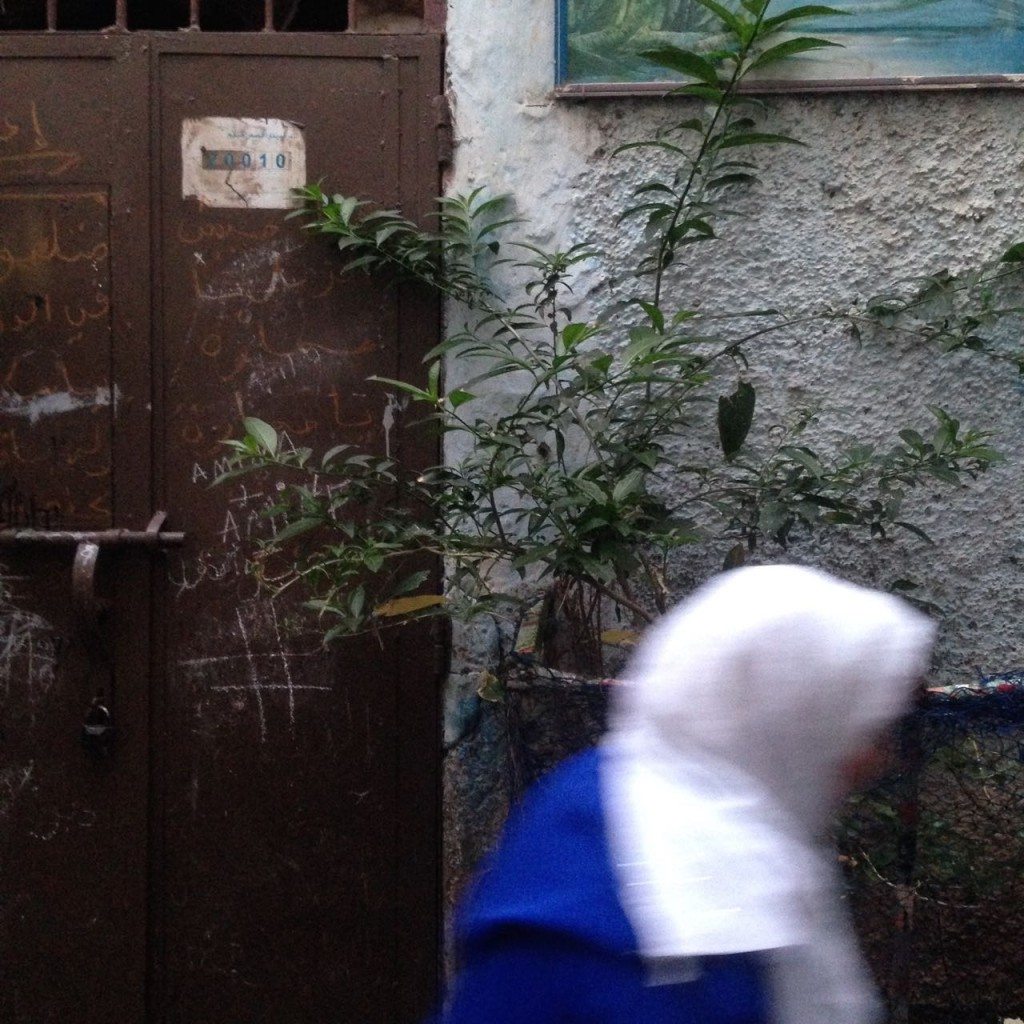Know your medina
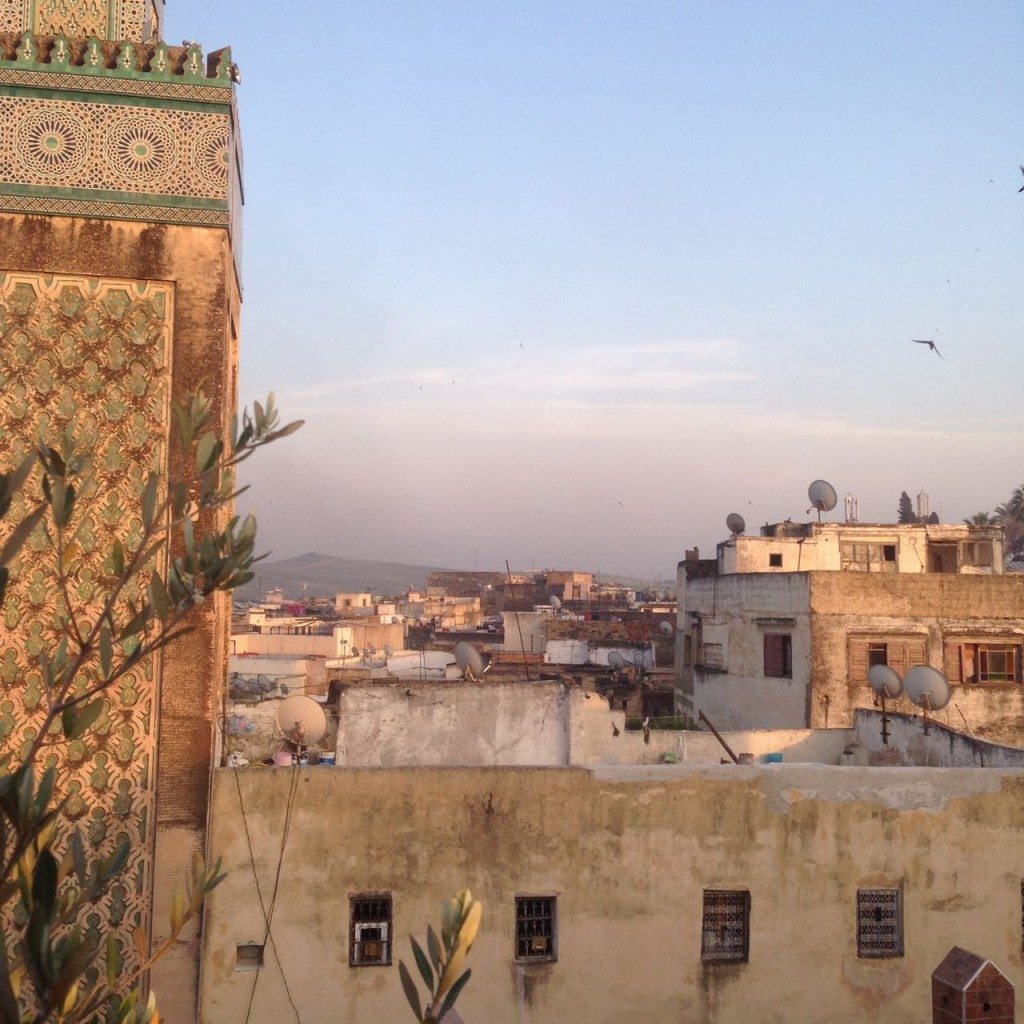
The medina of Fes, Morocco’s former capital and third largest city, is made up of a far-reaching network of pedestrian roads – straight and winding, cobble-stoned and paved and gravel. It has busy roads and quiet parts, abundant markets and open squares where artisans keep their workshops half inside, half out on the street. It seems to go on forever, which is almost true – the medina, founded in the 9th century, is the largest car-free area in the world. Fes-born architect and urban planner Sarah Essbai, describes the structure and social fabric of the medinas – and how these ancient and densely populated spaces extend into both the past and the future of Morocco. Jenny Gustafsson took the photos.
The medina in Fes consists of two parts, the old part or Fes El Bali, which dates back to the 9th and 10th centuries, and Fes Jdid, which was built in the 15th century and despite its name is not new at all. The entire area, with narrow streets and a quite steep topography, is pedestrian. Apart from that, mainly donkeys are used to transport goods and solid waste. For a while the city allowed the use of small four-wheeled vehicles for waste management and construction work, and people used to drive motorbikes in the medina. But there was a decision to not allow that anymore, because of the impact of the vibrations of these vehicles on the ancient structures of the buildings.
It seems to go on forever, which is almost true – the medina, founded in the 9th century, is the largest car-free area in the world.
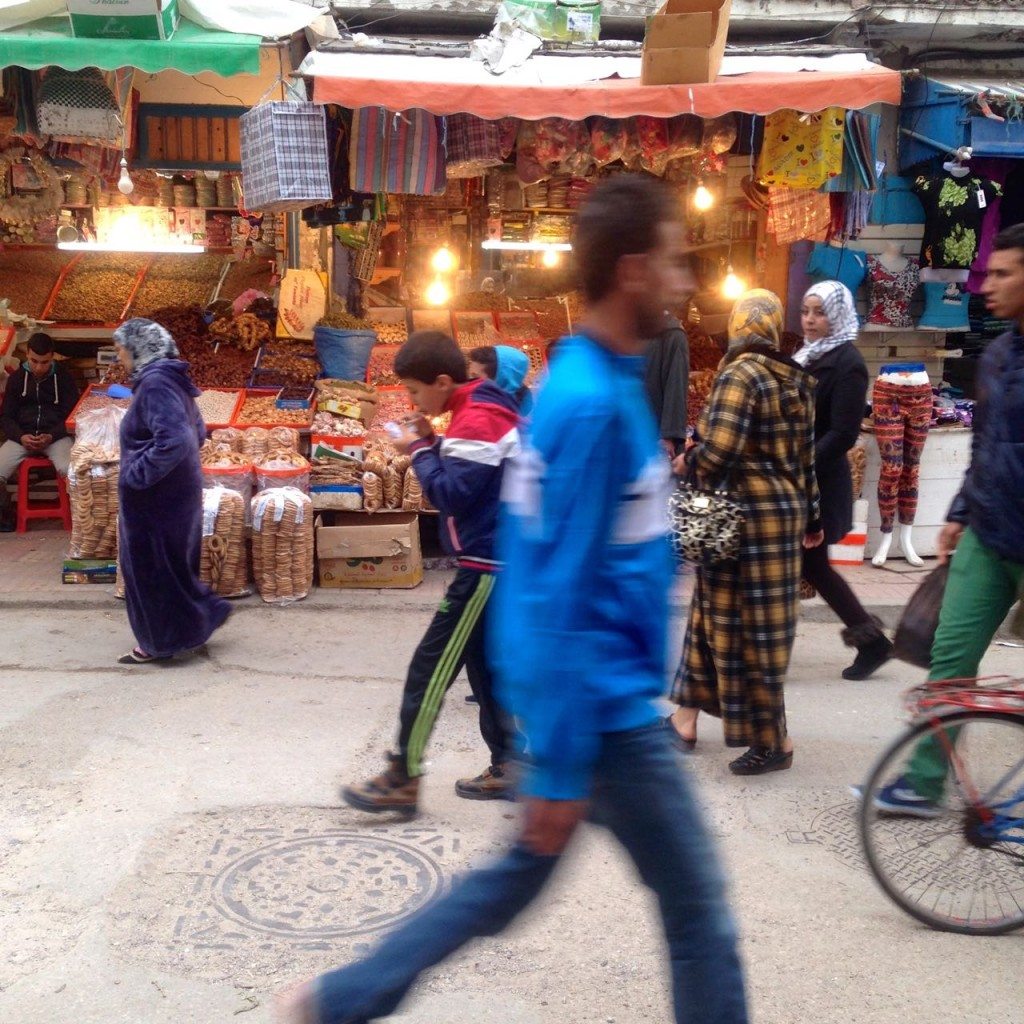
In contrast, Marrakech – which has a different and very flat topography, and is not as old as Fes – is a place where you see people use motorcycles a lot. In Fes, not anymore. Obviously you don’t use cars for practical reasons, they cannot get in. At the time of their development, the medinas were constructed for pedestrian traffic and horses. You can still find these metal handles to knock on the doors of buildings in the medina in Fes – one at the level of a person standing and another higher up, within reach for someone on a horse.
Like all Moroccan old cities, the medina in Fes has historical gates leading in to it. Today most people enter through Bab Boujloud, which actually is not that old. It’s a gate that was opened by the French when they were in Morocco. The real historic gate is next to it, but no one uses it anymore. Medina gates traditionally never open right on to the street like Bab Boujloud, they first lead into small, dark spaces, like unlit hallways. From there you make your way to the main commercial streets. This historically was a way for the city to protect itself. The French had a different mindset, they thought of a general making a grand entrance, getting off his horse in beautiful clothes.
You can still find these metal handles to knock on the doors of buildings in the medina in Fes – one at the level of a person standing and another higher up, within reach for someone on a horse.
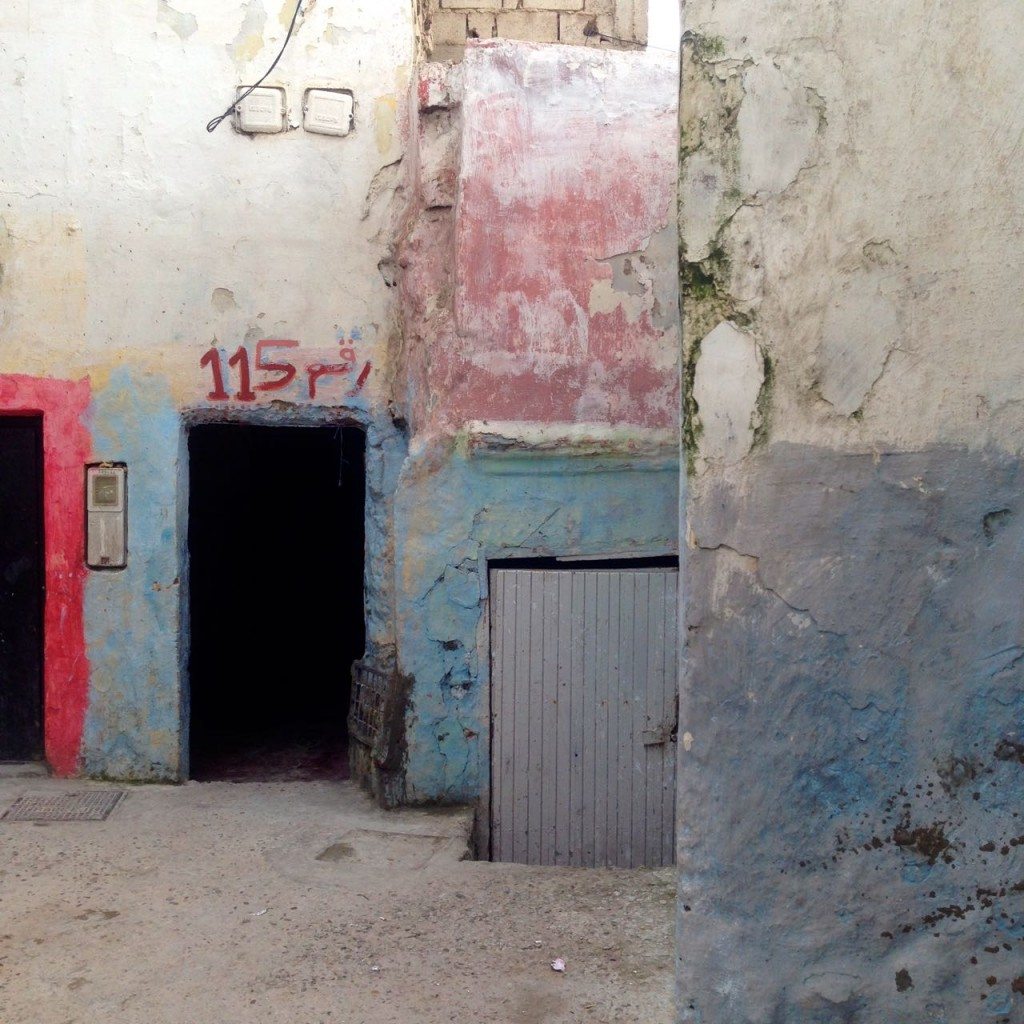
The streets in the medina may look narrow and alike but there’s a clear hierarchy. There are big streets, commercial ones with lots of activity, leading right through the space. In Fes you can walk from one end to the other in 30-45 minutes. You just follow the flow and end up in the other part of the medina.Leading away from them you have residential streets. They are usually much quieter, with no main activities like big shops and workshops. They lead to other, smaller, streets: derbs or alleys, which are cul-de-sac. They take you to micro residential quarters which can’t go beyond: to get out you must turn around and go all the way to the big street.
The second system is that of public plazas. These often take their names from the activity that goes on there, or traditionally did. In Fes you have plazas related to specific handicrafts: for example Nejjarine, which means “the carpenters”; Seffarine, which comes from the word yellow and is the plaza of the coppersmiths; or Chammain, “the waxers”, where candles used to be made and the golden embroidered traditional slippers are sold today.
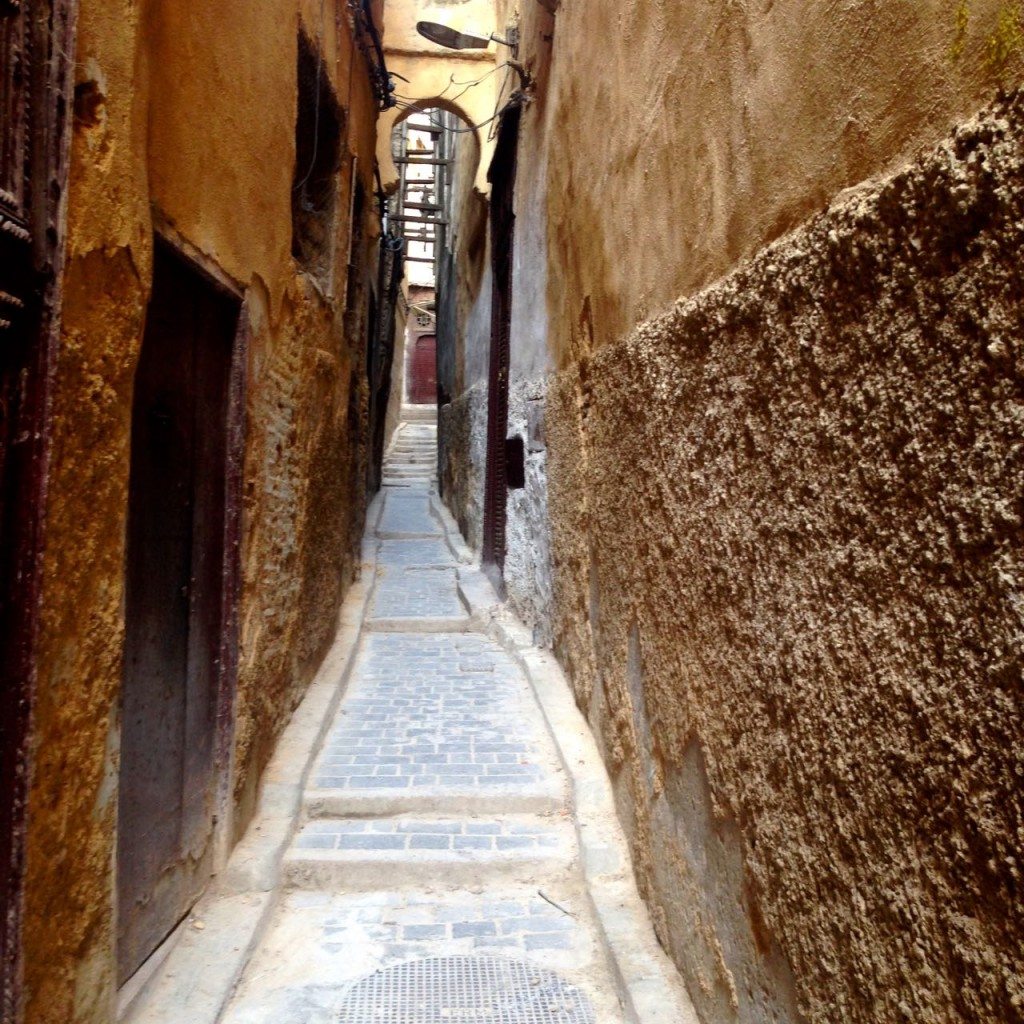
Nearby the old medina gates is where you find the fnaadeq. The word funduq, which means hotel, is nowadays mostly used in the Moroccan dialect to designate these old hospitality structures which offered accommodation to travellers and visitors. They were always within walking distance from the gates: foreigners were not supposed to go deep into the medina and get lost in the residential neighbourhoods. Also, this way no unknown people or potential thieves could run around. In our modern cities today the system is more sophisticated of course. But when you think of it, we still build hotels nearby airports and with easy access to commercial districts. Cities still want to do and attract business!
The story of the medinas in Morocco is different from that in Tunisia and Algeria. In Algiers, and also in Tunis but with less impact, the French when colonising did what they had done in Paris: drew wide boulevards and destroyed the medieval parts. While they were formally colonisers in Algeria, in Morocco – although technically occupiers – their presence was ratified by a protectorate convention. This can be one explanation of their different approach to urban development there. The French also entered Morocco much later, in 1912, whereas they were in Algeria since 1830. They had different plans for each country.
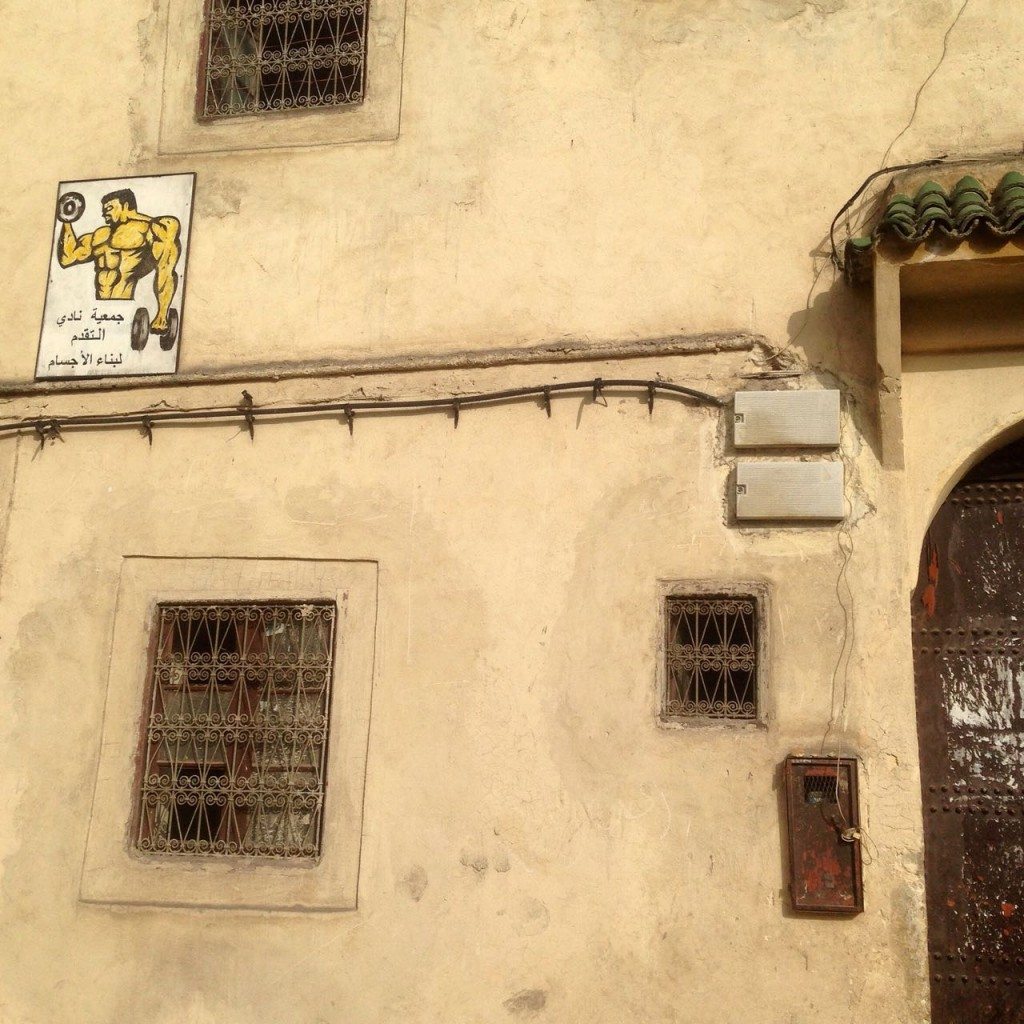
In Morocco, they moved away from the medinas and constructed separate quarters where Moroccans were not allowed. Moroccan cities therefore all have this duality, with an old and a new centre existing face-to-face – beside each other but not interacting. That in many ways preserved the medinas. But it was not entirely positive, because this ‘preservation’ in a sense also destroyed them, or led to their degeneration.
Dr. Larbi Bouayad, a history and architecture professor I had at the Ecole Nationale d’Architecture in Rabat, used to say that this injected them with a long-term poison. His theory is that medinas were stopped from developing. Local residents were kept confined to the medinas, as if no population growth or development was going to occur. But that of course was not the case – the medinas saw a population explosion. In addition to natural growth, rural poverty forced people into the cities where industries were being developed. Their only choice was the medinas, so they moved in there and began to build on top of the existing structures, or whatever green and empty spaces there were, until the buildings were completely touching the protective surrounding walls. The medinas weren’t able to grow outside of their confined spaces. This contributed to what we see today: overpopulation, problems with poverty and a degradation of buildings and structures.
In Morocco, the French moved away from the medinas and constructed separate quarters where Moroccans were not allowed. Moroccan cities therefore all have this duality, with an old and a new centre existing face-to-face – beside each other but not interacting.

From an architectural point of view, the medinas have suffered great damage. The buildings are not in a good shape. Many families who previously owned houses in the medinas don’t live there anymore. They have left, moved to new parts in the cities. For those who had the means to leave, it wasn’t very reasonable to stay. The quality of life became unbearable as the medinas became even denser: people continued to move in as a result of years of drought and a continued exodus from the countryside. The medinas were essentially suffocated.
But something interesting also occurred with this shift. Heritage was passed on. As people left the medinas and new residents settled in, there was some kind of transfer of unspoken rules. There’s a certain structure in the medina – social relationships between people and support systems – which lived on. Nobody would say “do this and that”, to a newcomer, people would simply learn. The space would tell you how to do things.
The medinas were essentially suffocated.

Long before the notion of government there was a sense of communal living in the medinas. There were systems to provide public goods and services like water and utilities, or collecting taxes and mitigating nuisances. In that sense, they were a continuation of how old human settlements used to work.
Wealthy and poor neighbourhoods were traditionally not separated in these spaces. There are some exceptions, like the neighbourhood of Ziyat in Fes, which is known for its big houses and palaces with separate reception houses and women’s quarters. But mostly in the medinas, rich lived together with the poor. Big and small houses would stand next to each other. On Talaa Sghira, a street in the oldest parts of Fes’ medina, there are huge mansions next to very small homes.
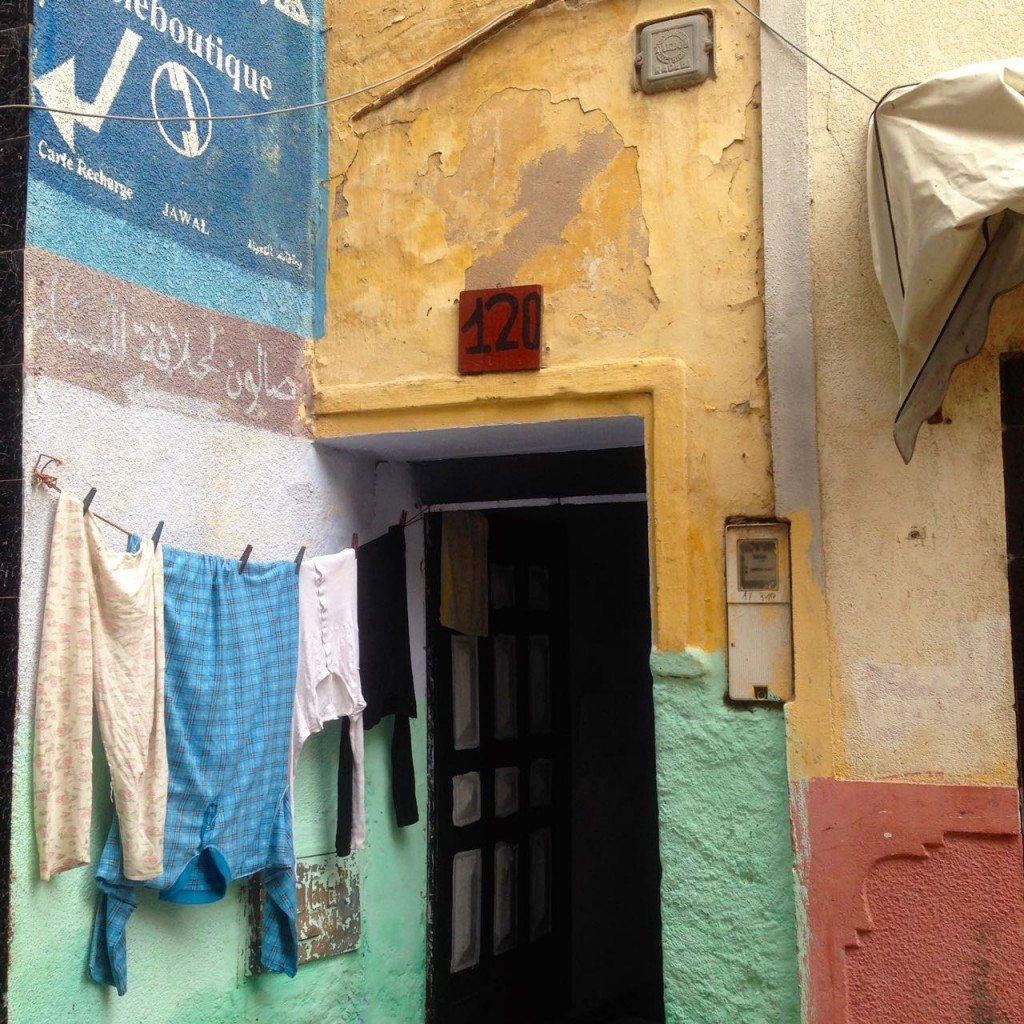 In the past three decades, there have been many rehabilitation programs and displacement schemes by the authorities, to reduce the population density in the medinas. But they have been met by a great resistance. People cannot or don’t want to leave, despite the bad shape of the buildings. They are used to having everything nearby – to live a few minutes away or upstairs from where they work, still in a very affordable way and with lots of amenities and activities nearby.
In the past three decades, there have been many rehabilitation programs and displacement schemes by the authorities, to reduce the population density in the medinas. But they have been met by a great resistance. People cannot or don’t want to leave, despite the bad shape of the buildings. They are used to having everything nearby – to live a few minutes away or upstairs from where they work, still in a very affordable way and with lots of amenities and activities nearby.
In the last 10 to 15 years, we have seen gentrification starting to taking place. People have come in with big capital wanting to buy and restore old houses. This has especially happened in the medina of Marrakech, which at the early 2000s started to become hugely popular for retirees, mostly French and British. These new residents bought and renovated houses, even creating their own neighbourhoods and associations to take care of local services such as security and the maintenance of the public spaces.
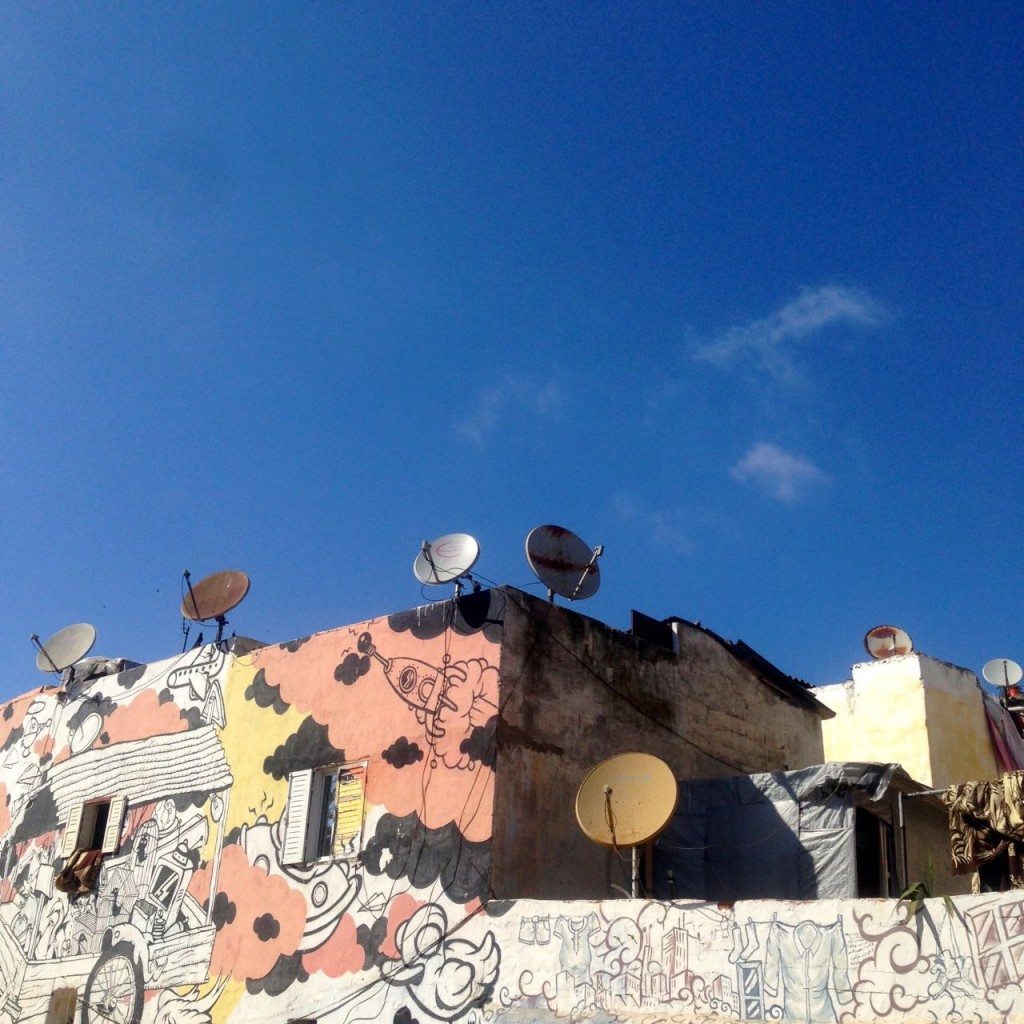
Fes is the next destination, many say. But the majority of households in Fes today are still low-income. The medina is not easily taken over, people who move in have to adapt. And the space itself doesn’t let you dominate. It is its own environment. Fes’ medina is also much older than the one in Marrakech and therefore, renovation projects are difficult and complex. The building structures are more endangered. These factors all slow gentrification down. But it’s happening.
The role of the medinas overall has changed. They are not growing like they did under the French protectorate. But rural migration continues – the reasons may be different today but the common ground is still an escape from poverty in search for for better living conditions. Recently we have seen the growth of urban slums, but the medinas still receive many immigrants. They have the lowest rents, and there’s the proximity to public amenities and services.
The future of the medina is part of the larger question of urbanisation in Morocco, and solutions have to be found alongside solutions for cities as a whole. There’s a will to preserve the medinas and their structures, as part of the national heritage or national identity if you will. But there’s need for a general rehabilitation of space and social structures, an upgrading of the current level of services and an effective and affordable housing policy.
The future of the medina is part of the larger question of urbanisation in Morocco, and solutions have to be found alongside solutions for cities as a whole.
